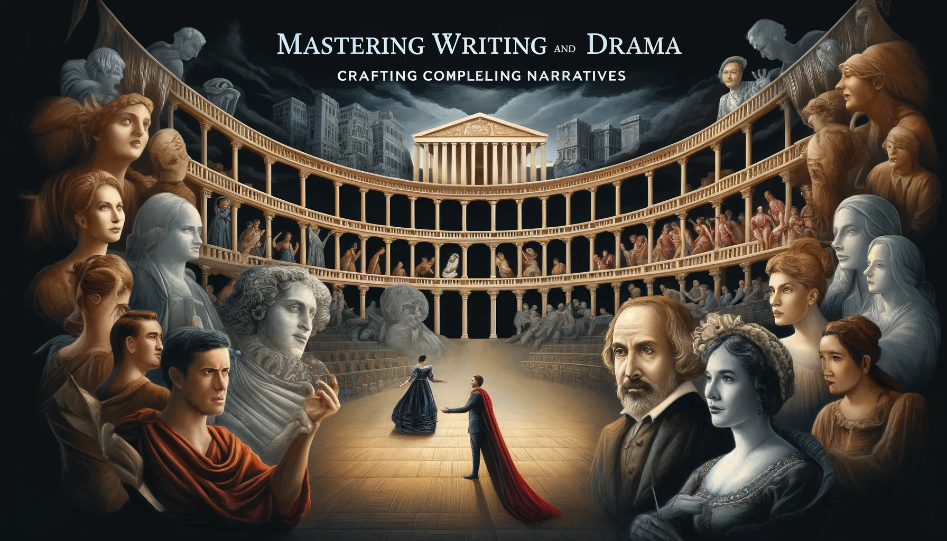Writing and Drama: Crafting Stories That Come to Life

Introduction
Writing and drama are powerful forms of storytelling that have captivated audiences for centuries. From ancient Greek tragedies to modern-day screenplays, the intersection of writing and drama has produced some of the most memorable and impactful stories. In this article, we explore the relationship between writing and drama, delve into the techniques that writers use to craft compelling dramatic narratives, and highlight real examples of exceptional works.
The Relationship Between Writing and Drama
Writing and drama share a symbiotic relationship. Writing is the foundation of drama, providing the blueprint for characters, dialogue, and plot. Drama, on the other hand, brings written words to life through performance, adding layers of emotion, tension, and visual storytelling. Together, they create a dynamic and immersive experience for the audience.
Historical Context
The relationship between writing and drama dates back to ancient times. The Greeks were among the first to formalize dramatic storytelling with playwrights like Sophocles and Euripides, whose works are still studied and performed today. These early dramas were written to be performed in amphitheaters, where actors brought the text to life through speech and movement.
Evolution Over Time
Over the centuries, the art of writing for drama has evolved. Shakespeare's plays, for instance, are renowned for their rich language and complex characters. In the modern era, drama has expanded beyond the stage to include film, television, and digital media, each with its own unique writing style and conventions.
Techniques for Writing Dramatic Narratives
Writing drama requires a unique set of skills and techniques. Here are some key elements to consider when crafting a dramatic narrative:
1. Character Development
Characters are the heart of any drama. Writers must create multi-dimensional characters with clear motivations, strengths, and flaws. These characters should undergo significant development and transformation throughout the story, keeping the audience engaged.
Example: In Arthur Miller’s "Death of a Salesman," Willy Loman is a deeply flawed character whose dreams and delusions lead to his tragic downfall, showcasing profound character development.
2. Conflict and Tension
Conflict is the driving force of drama. It can be internal (within a character) or external (between characters or between a character and their environment). Writers should build tension gradually, creating suspense and anticipation that leads to a climax and resolution.
Example: In Tennessee Williams' "A Streetcar Named Desire," the intense conflict between Blanche DuBois and Stanley Kowalski drives the dramatic tension, culminating in a powerful climax.
3. Dialogue
Dialogue in drama must be natural and authentic, yet purposeful. It should reveal character, advance the plot, and convey subtext. Good dialogue often contains subtext—what is implied but not directly stated—adding depth to the interactions between characters.
Example: In David Mamet’s "Glengarry Glen Ross," the sharp, rapid-fire dialogue reveals the desperation and moral ambiguity of the characters.
4. Structure and Pacing
The structure of a dramatic narrative typically follows a three-act format: setup, confrontation, and resolution. Within this framework, writers must manage the pacing, ensuring that the story unfolds at a rhythm that maintains the audience's interest.
Example: Shakespeare's "Hamlet" is a masterclass in structure and pacing, with each act building on the previous one to create a cohesive and gripping narrative.
5. Visual and Sensory Details
While drama is performed, the written script should include visual and sensory details that guide the performance. Descriptions of settings, actions, and emotions help actors and directors bring the story to life.
Example: In Anton Chekhov’s "The Cherry Orchard," the detailed descriptions of the setting and the characters’ interactions with it enhance the dramatic impact of the play.
The Benefits of Incorporating Drama into Writing
Integrating drama into writing offers several benefits, both for the writer and the audience:
1. Enhanced Emotional Impact
Drama engages the audience on an emotional level. By incorporating dramatic elements, writers can create stories that resonate deeply, evoking empathy, excitement, and suspense.
2. Improved Narrative Skills
Writing for drama hones a writer's narrative skills. It requires precision in character development, dialogue, and plot structure, which can improve overall storytelling abilities.
3. Greater Audience Engagement
Dramatic writing can captivate and retain audience attention more effectively than non-dramatic narratives. The tension and conflict inherent in drama keep readers or viewers invested in the story.
4. Versatility Across Mediums
Mastering dramatic writing opens opportunities across various mediums, including theater, film, television, and digital content. Each medium offers unique challenges and rewards, allowing writers to expand their creative horizons.
Conclusion
Writing and drama are intertwined in a dance of words and performance, creating stories that captivate and move audiences. By mastering the techniques of dramatic writing, writers can craft narratives that are rich in emotion, conflict, and character development. Whether on stage, screen, or page, the power of drama in writing is undeniable, making it a timeless and essential aspect of storytelling.
Incorporate these elements into your writing, and you'll be well on your way to creating compelling dramatic narratives that resonate with your audience.



